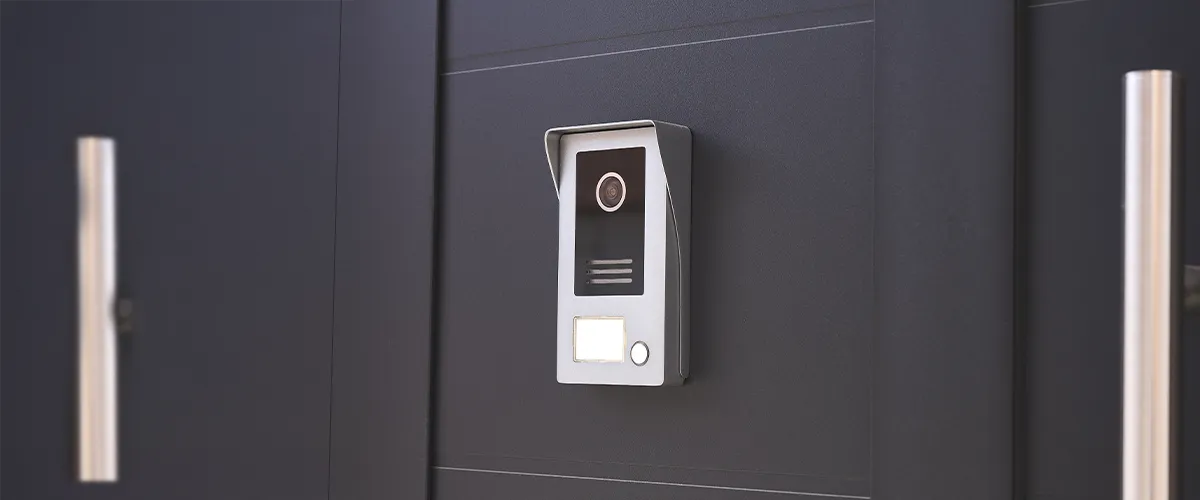Video intercoms are fast becoming a core layer of protection for businesses. It gives a clear view of who’s at the door, allows managers to grant or deny access remotely, and, in most cases, helps staff feel more at ease knowing someone is watching the front line.
Unlike a basic buzzer, these systems combine live video, two-way audio, and secure access control. That means a business can actually see who’s on the door, confirm the reason they’re there, and keep a record of it if needed. The right choice often comes down to a mix of reliability, how easy it is to use day to day, and whether it can grow with the business in the future.

Understanding Video Intercom Systems and Their Role in Businesses
At its simplest, a video intercom system lets you see and talk to a visitor before opening the door. Behind that simple idea are a few crucial elements, including:
- Camera
- Microphone
- Speaker, and
- Release mechanism
Together, they diminish the risk of unauthorized access while keeping daily operations smooth.
Video intercoms have diverse uses, depending on the nature of your business. For example, offices place them at the main doors and basement carparks, where security needs to screen both staff and visitors, while small retail shops might rely on them for managing delivery drivers at the back entrance.
What makes them even more valuable is how they connect with other security layers. Many systems link directly to CCTV, card readers, or alarms. In most cases, the intercom is the first checkpoint; if something doesn’t look right, access is denied before the visitor ever reaches the door.
Essential Features to Consider When Choosing the Best Video Intercom System for Business Security
Every business has slightly different priorities, but a few features make a system stand out. These are the ones worth paying attention to:
Image and Audio Clarity
It’s frustrating trying to work with grainy video or muffled sound, so quality here matters:
- High-definition footage that still looks sharp at dusk or in dim corridors
- Wide-angle views that capture more than just the person standing squarely in front
- Noise filters to cut through wind, traffic, or machinery rumble
- Camera settings that can be tweaked for morning glare or late-night shadows
Durability
Outdoor stations cop the brunt of Melbourne’s shifting weather and sometimes rough handling:
- Casings with strong IP ratings so they can handle heavy rain, dust, and summer heat
- Vandal-resistant housings that keep working even if someone tries to tamper with them
- Solid finishes like stainless steel or reinforced polycarbonate for extra resilience
Remote Control
Flexibility makes a big difference when staff can’t be everywhere at once:
- Unlocking gates or doors straight from a smartphone, tablet, or desktop
- Managing several entry points from one simple dashboard
- Setting different access levels so only authorised people can make changes
Recording and Storage
A good system doubles as a record keeper, which is handy for both compliance and disputes:
- Visitor logs stamped with entry times and details
- Built-in recording that shows exactly who came through and why
- Cloud storage for quick retrieval when you’re off site
- Local backups so nothing is lost during internet or power interruptions
Integration
A video intercom shines when it works with the rest of your security network:
- Connecting to swipe cards, biometric readers, or mobile apps for access
- Linking with CCTV so everything is monitored in one place
- Triggering alarms or lockdown features if something suspicious happens
Ease of Use
The most advanced system is pointless if it slows people down. It should feel simple:
- Interfaces that staff can pick up without a training manual
- Fast response when someone presses the button
- Local support and maintenance that keep the system running smoothly
Local support and maintenance that keep the system running smoothly
Not all systems are suited to every workplace. The following categories outline the options most commonly chosen by Australian businesses:
| System Type | Best Suited For | Key Advantages | Considerations |
|---|---|---|---|
| IP intercoms | Offices, multi-site organisations | Scalable, remote access, strong integration with CCTV and cloud | Higher upfront cost, requires strong internet infrastructure |
| Wired intercoms | Warehouses, factories, large complexes | Stable, durable, excellent video/audio quality | Installation can be invasive and costlier in retrofits |
| Wireless intercoms | Small to medium businesses, retail, temporary setups | Flexible, easy to install, lower initial cost | Performance depends on Wi-Fi strength and may require boosters |
| Hybrid systems | Expanding businesses with varied layouts | Combines wired stability with wireless flexibility | More complex setup, requires careful planning |
Each option has strengths, but the best choice depends on the size of the premises, budget, and the level of integration required with other security measures.
Concluding Words
The best video intercom system isn’t the same for every business. What works well in a retail shop might not cut it for a warehouse or a busy office block. The right system is one that matches daily operations, holds up over time, and makes life simpler for staff.
At Wireless Camera Solutions, the approach goes beyond basic wiring and setup. Every site is different, so the team takes the time to understand how your business runs and then installs an intercom system to fit. The result is a solution tailored with care, precision, and efficiency. Book an appointment today and let experts secure your workplace the right way.

